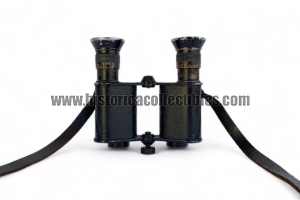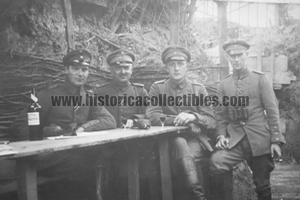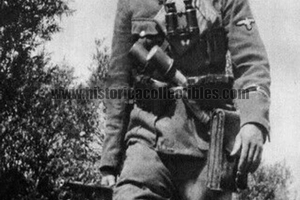Binocle 6x18, Ernst Leitz Wetzlar, 1st Leitz Binoculars ever Made, 1907
In 1907, the Optische Werke Ernst Leitz created its first prism binoculars called "Binocle 6x18" in its optical laboratories in Wetzlar. Its marketing took place on May 14 of the same year.
The left eyepiece plate shows "Binocle 6x" and D.R.P (deutsche-reich-patent) while the right one shows the E. Leitz Wetzlar brand. The curved plates and the absence of the central bar make it a truly unique and cutting-edge binocular for that era.
They were produced in small numbers and to date only one other example is known.
History of Ernst Leitz:
Originally called the Optisches Institut, Leica was founded as a small optical workshop in Wetzlar, Germany in 1849. The founder, a German mechanic named Carl Kellner, was intrigued by the advent of microscopes at the time and wanted to establish a factory that produced devices better than its competition.
His hard work soon paid off when in 1851 his laboratory gained popularity for producing high-quality microscopes. Production and sales were severely affected in the years following the owner's sudden death in 1855.
Ernst Leitz joined the company in 1864 as an employee and assumed complete authority after the death of Frederic Belthle, an apprentice hired by Carl Kellner. He later added his full name to the company name in 1869. After immense success in the microscope business, the company opened its first international retail outlet in New York City in 1892. Under Leitz's rule, the small Wetzlar laboratory transformed into a large factory and annual production rose to 4,000 microscopes in 1890.
After establishing a loyal customer base, Ernst Leitz – Optisches Institut – Wetzlar began producing "Binocle 6x18" binoculars at its Wetzlar location in 1907, which laid the foundation for Leica Sport Optics. The binoculars were later followed by high-quality spotting scopes. By the 1960s, Leica binoculars had gained so much admiration that NASA decided to send the Leica Trinovid to the Moon aboard the Apollo mission in 1969.
An optical engineer named Oskar Barnack joined Leica in 1911 to work on binoculars. In his spare time and using company resources, he developed the first working model of a portable camera that used 35mm photographic film.
The device was called the Leitz Camera, named after the CEO, Dr. Ernst Leitz II. The camera became an instant hit among the masses, and Leitz officially added it to the company's product line. Considering the high popularity of the Leica camera range, the company was renamed Leica in 1986, using "Lei" from Leitz and "ca" from the camera.




